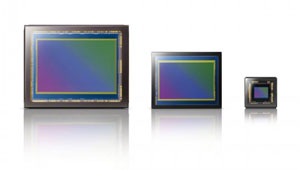Digital photography is not only a boon to camera makers, but also for us who are so lusting after ever new gear. Back in the days when you bought a film camera, the model’s next series could only have minor improvements. That’s the nature of film photography. Autofocusing was about the biggest revolution in decades. Since the arrival of digital photography we have a revolution every few years, and therefore a reason to buy new gear all too often. The next revolution about to kick in? Full-frame sensors coming down to the masses.

Digital photography has come a long way since its first bulky models with a few megapixels. Now we’re at the threshold to another exciting chapter. Alright, the D600 and RX1 are still expensive, but these cameras are just the first step of many to follow. Digital full-frame is not just for professionals any longer.
It’s not too difficult to see that within two years or so every major camera maker will have to have a full-frame solution — well except for Olympus and Panasonic, pioneers of Four Thirds and then Micro Four Thirds. They become trapped by Moore’s Law.
Their advantage — the comparatively smaller lenses — will be an advantage for some time to come. But even light and physics can be tricked. Sounds impossible today, but the lenses of the future? Look what Sony does with the RX1.
We now have a compact full-frame mirrorless. The camera body is smaller due to lack of a mirror and pentaprism. Still, especially zoom lenses will still have to be big to accommodate a large sensor, making such a system tough to balance and handle.
So in the foreseeable future the mirrorless full-frame market will likely remain to be a market for prime glass a.k.a. professionals and enthusiasts wanting the real thing.
The “real thing”?
I know, defenders of the order of equivalence out there, full-frame is simply referring to one of many film formats, in this case to the classic 35mm. To each his own. Micro Four Thirds users are happy with their own “full-frame” whereas each sensor size offers distinct pros and cons. The smaller the sensor, the better for macro photography. The larger the sensor, the easier to blur background.
The 35mm focal length has been a favorite for photographers for half a century.
That’s not what the full-frame revolution is about. It’s about the fact to maximize the sensor’s potential. The new era will take over from the trend of the miniaturization of gear by offering whole new perspectives to pros, enthusiasts and newcomers alike. Because portability is only one factor. Price is another one — and here’s why full-frame is becoming (more) affordable:
This is an excerpt from an earlier article on “digital full-frame cameras soon going mainstream”:
Full-frame sensor production was prohibitively expensive only a few years ago.
Production costs for a full-frame sensor can still exceed 20 times the costs for an APS-C sensor.
Only 20 full-frame sensors would fit on an 200mm (8-inch) silicon wafer. Yield is comparatively low because the sensor’s large area makes it very vulnerable to contaminants. 20 evenly distributed defects could theoretically ruin an entire wafer. Additionally, the full-frame sensor requires three separate exposures during the photolithography stage, tripling the number of masks and exposure processes.
We see a lot of the cost reductions in silicon happen because smaller transistors take less space, a.k.a. less silicon area. The manufacturers however only see a benefit of making full-frame mainstream if the price of the large sensors reaches a point close to the smaller APS-C sensors.
The once prohibitively expensive production of full-frame sensors has reached sensible cost-benefit ratio.
So we have the factors portability, cost and… image quality. That’s where the full-frame revolution comes in.
There’s no denial that — oversimplified — the bigger the pixel, the better the output. And who needs medium format since the D800’s 36MP… Now, with full-frame prices giving in, who needs the full-frame top models. Camera makers are cannibalizing themselves.
The future is simple: smaller and better. It’s about the perfection of the taken image. That’s exactly what compact mirrorless full-frame offers.
Full-frame photography, therefore, is not so much about taking pictures with a zoom. It’s about making use of the best possible means. That asks for primes. That’s why the RX1 is what the RX1 is, for now.
Compact full-frame mirrorless with prime glass will be a high quality niche domain. Still, people will keep on asking for zooms. They’ll find out, however, that with so many decent pixels you can “zoom in” by cropping and post-processing. What else you need.
It’s never a good time to buy a new camera. There’s always something newer, better, more elaborate around the corner… That, however, is not what photography is about. There are so many nice choices available already. But then again, photography’s about to get even better.
Compact mirrorless full-frame with interchangeable lenses, that’s the major shift that just began.
It’s no surprise that especially Sony will continue to surprise. Since some time it’s them having the guts to produce game changers.
Still longing for a Leica M?
Compact full-frame is the one thing that long set Leica apart from the rest. Soon that unique advantage is history.
Smaller lenses? Again, Moore’s Law..
The intriguing red dot may lose some of its glamor. By aggressively slashing the M9 and M9-P prices the German boutique camera maker itself acknowledges that M bodies can depreciate amazingly quickly.
Just imagine what that means for used gear. There goes your value. Sure, in the end it’s mostly the glass that counts. Seem only logical though that we’ll soon have a state-of-the-art compact non-Leica full-frame solution, capable of mounting M glass.


